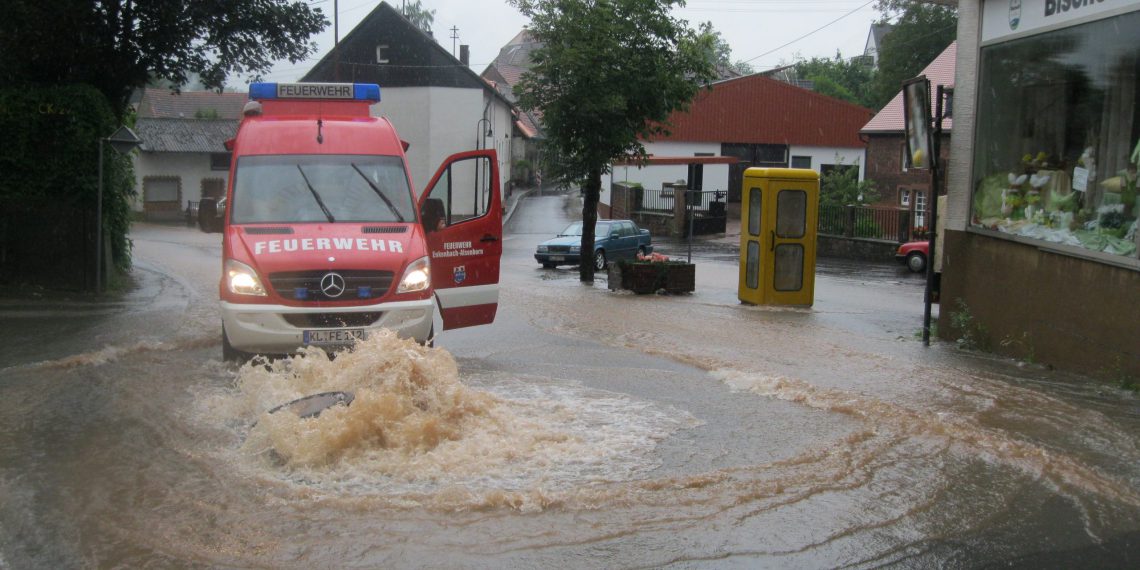Researchers at the Weihenstephan-Triesdorf University of Applied Sciences (HSWT) and the Mainz University of Applied Sciences (HS Mainz), together with practical and municipal partners, have developed a consulting tool in the joint project “Incentive Systems for Municipal Flood Prevention (AKUT)” that supports municipal employees and planners in preventing flood damage in municipalities. The focus is on bringing all actors together, overcoming conflicting goals and jointly generating efficient overall solutions. To achieve this, the method relies on a site-specific optimization and incentive system.
As a result of climate change, heavy rain events, such as those that occurred this summer, are increasing in frequency and intensity. In principle, they can affect all regions of Germany. Therefore, flood safety is one of the central challenges for urban drainage. This complex task requires interdisciplinary cooperation between various municipal and private actors, such as citizens, farmers, local businesses and forestry. For an effective precautionary concept, it is necessary to implement measures that serve both the individual and the general public. For example, it is often the case that flood protection measures must be implemented on properties owned by private individuals or businesses.
An essential prerequisite for fruitful cooperation is an understanding of flood prevention as a joint municipal task that can only be mastered together. At present, however, the individual actors lack the willingness to subordinate themselves to an optimized overall solution process. There is often a lack of incentives to do so.
So that everyone pulls together: Location-specific, optimized strategies
The consulting tool ‘AKUT’ addresses this problem. It supports municipalities in identifying suitable precautions and thus makes it easier for local politicians to decide on measures to be implemented. AKUT explicitly takes into account the necessary interaction between the various actors and the incentives that motivate them to implement the steps. After a short training period, the tool can be used even without IT expertise.
Users first draw flood protection measures for retention, e.g. basins, swales, areas, or drainage, e.g. channels, ditches or embankments, at possible locations on an interactive map. AKUT then uses a mathematical model to determine an optimal selection from these possible measures. In doing so, it depicts various interrelationships, such as the stakeholder-related hazard situation and the expected extent of damage, the effectiveness and feasibility of the precautionary measures, and the required individual incentives.
In this way, the tool determines an optimal strategy for action, taking into account the site-specific conditions of the municipality and the willingness of the various actors to participate. This includes a combination of structural measures including the associated costs and necessary incentives. Map representations before and after the optimization illustrate the expected effect on the hazard situation.
The project, which was funded by the German Federal Ministry for the Environment, Nature Conservation and Nuclear Safety (BMU), was led by Prof. Dr. Inka Kaufmann Alves from HS Mainz, and on the HSWT side by Prof. Dr. Clemens Thielen. Besides the two universities, igr GmbH and the municipality of Enkenbach-Alsenborn were involved in the project. It was also supported by the Verbandsgemeinde Nordpfälzer Land, the Kommunalwirtschaft Mittlere Bergstraße in Hesse, the municipality of Elxleben in Thuringia and the Ministry for Climate Protection, Environment, Energy and Mobility Rhineland-Palatinate.

















